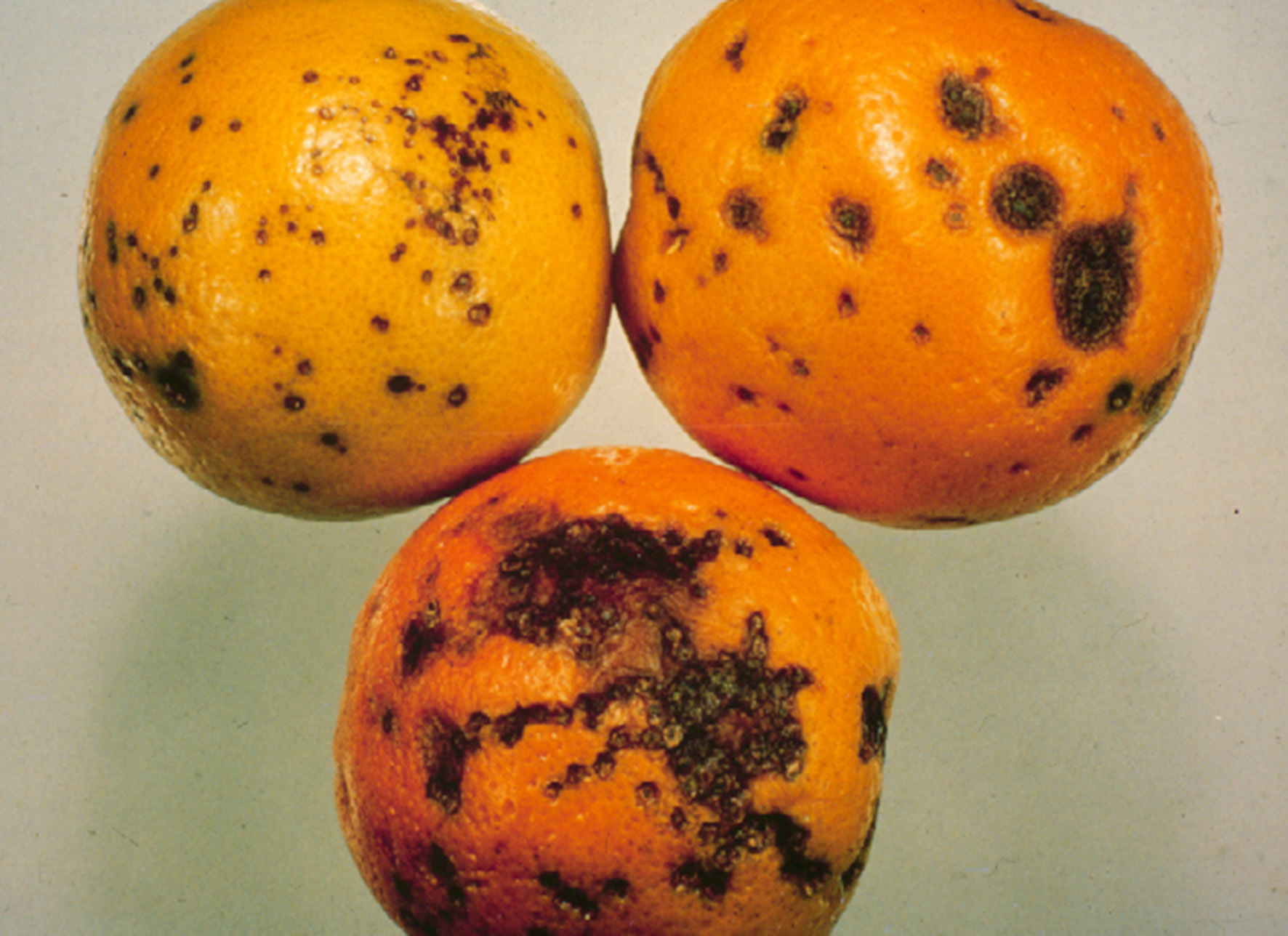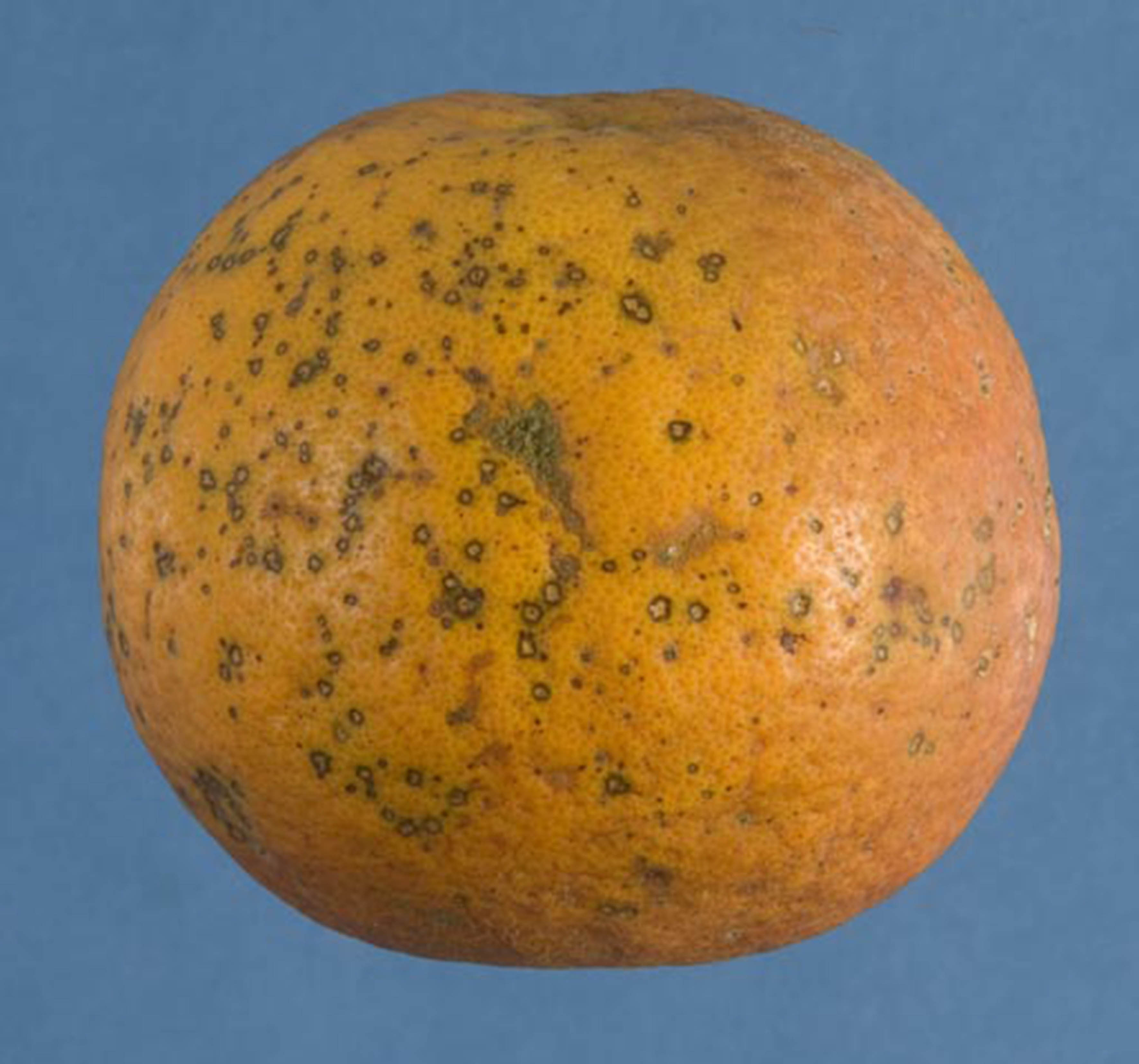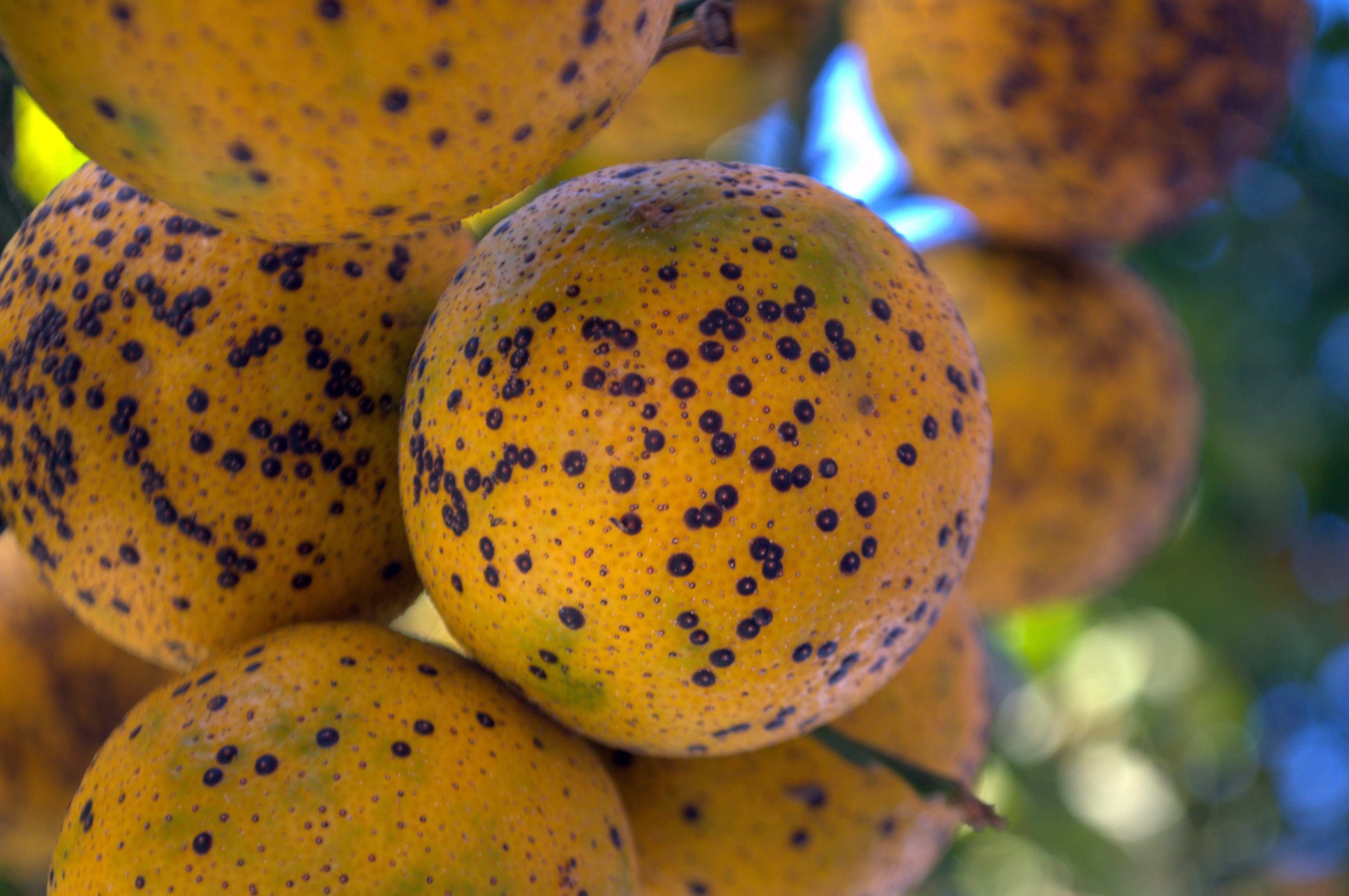
Citrus black spot is a declared pest in WA
Citrus black spot is not known to occur in WA and must be reported to the department if found or suspected to be present in WA.
This fungal disease occurs in Queensland, New South Wales, and the Northern Territory. Therefore, early detection is critical to protect WA orchards and citrus growers.
About citrus black spot
Citrus black spot (Phyllosticta citricarpa) is a fungal disease of citrus trees that mainly affects the fruit but can also affect the leaves of many types of citrus. It is not known to be a risk to human health.
The fungus causes black spots on the rind of the fruit. Disease lesions do not go beyond the rind and do not affect the quality of the flesh or cause decay, but the fruit becomes unmarketable due to its poor appearance.
Fruit may drop prematurely when trees are severely infected, resulting in significant yield loss.
All commercial citrus is susceptible to citrus black spot and the most susceptible are the orange cultivar Valencia, mandarins and lemons.
Four types of black spots or blotches may appear on the fruit:
- Hard spot: Occurs pre-harvest, often on the side of fruit exposed to sunlight. Sunken or depressed lesions, with brick-red, brown or black margins and a grey centre where fungal spores are produced.
- False melanose or speckled blotch: Appear as numerous small, raised dark brown or black necrotic lesions that are less than one millimetre in diameter, often on young green fruit.
- Freckle spot: Indicates heavy infection and occurs on mature fruit, post-harvest and often while in storage. Spots are round, depressed or sunken and reddish-brown with a red to brown border, 1–3mm in size.
- Virulent or spreading spot: Sunken and irregular, occurs on heavily infected mature fruit towards the end of the growing season. Colour varies from brown or brick-red to black, and a leathery texture may eventually cover the fruit.
Leaf spots may occur on the more susceptible citrus species, especially lemon.

Lesions occur only on the rind and do not affect the flesh of the fruit or cause decay.
However, the black spot lesions reduce the quality of citrus produce, the grade, and therefore the marketability.
Infection near the stem of the developing fruit may lead to premature fruit drop (Baayen et al. 2002) thereby reducing production.
The presence of the disease in WA would have negative economic consequences for the citrus industry, with unmarketable fruit locally, plus limited or no access to export markets in countries that are free of the disease.
- Fungal spores are released from infected fruit and leaves during summer and spread to healthy plant tissues through rain splash and in leaf litter.
- New infections are not seen until autumn or winter.
- The disease is favoured by high temperatures, high light intensity, drought and poor vigour of the host tree.
Legal duty to report
Citrus black spot is not known to occur in WA.
Phyllosticta citricarpa (McAlpine) Aa (1973) is a declared pest under section 12 of the Biosecurity and Agriculture Management Act 2007.
This means that any person who finds or suspects the presence of citrus black spot must report it to DPIRD.
Western Australia's freedom from citrus black spot is supported by general and specific surveillance and specific import requirements to prevent its entry.

